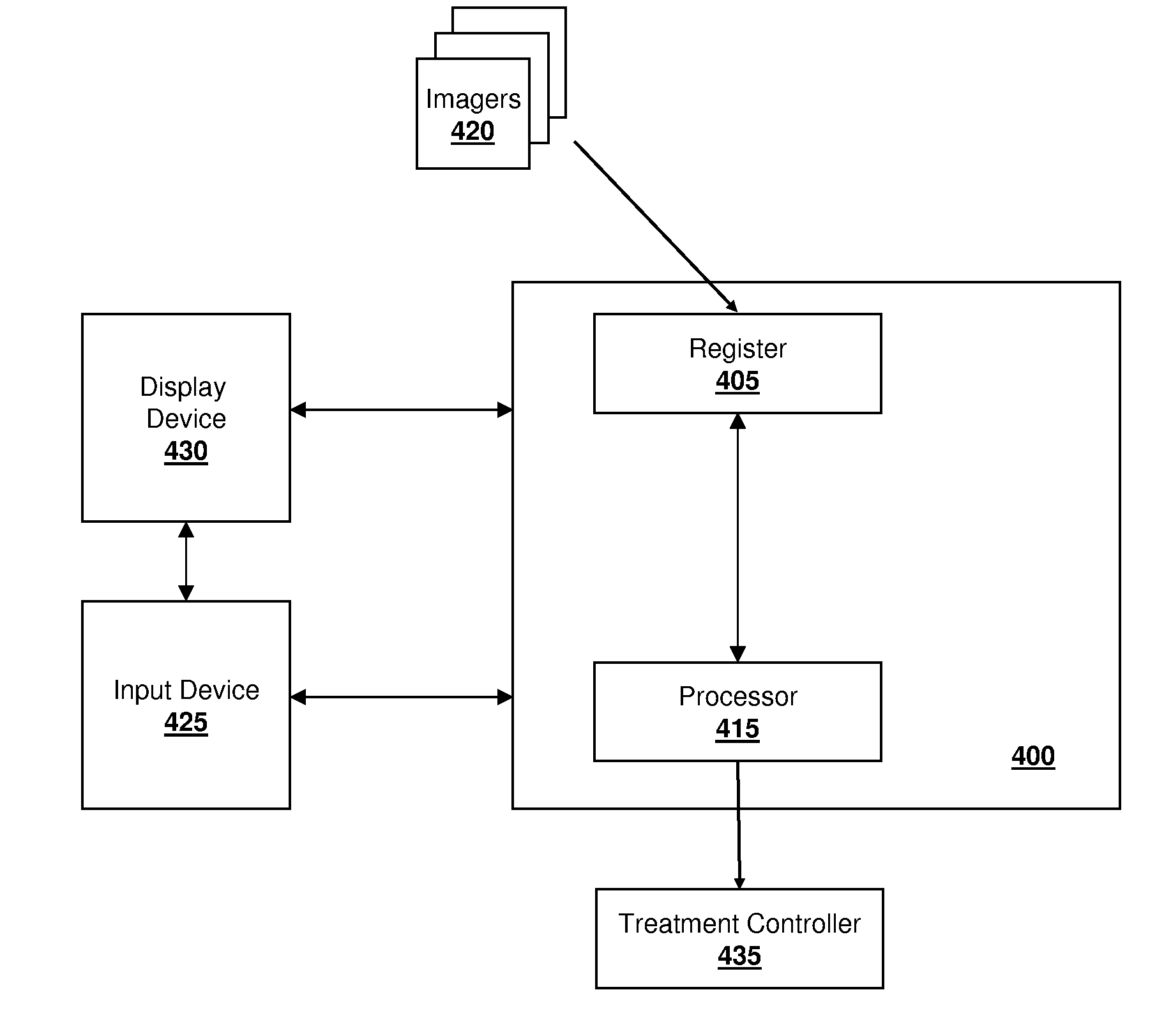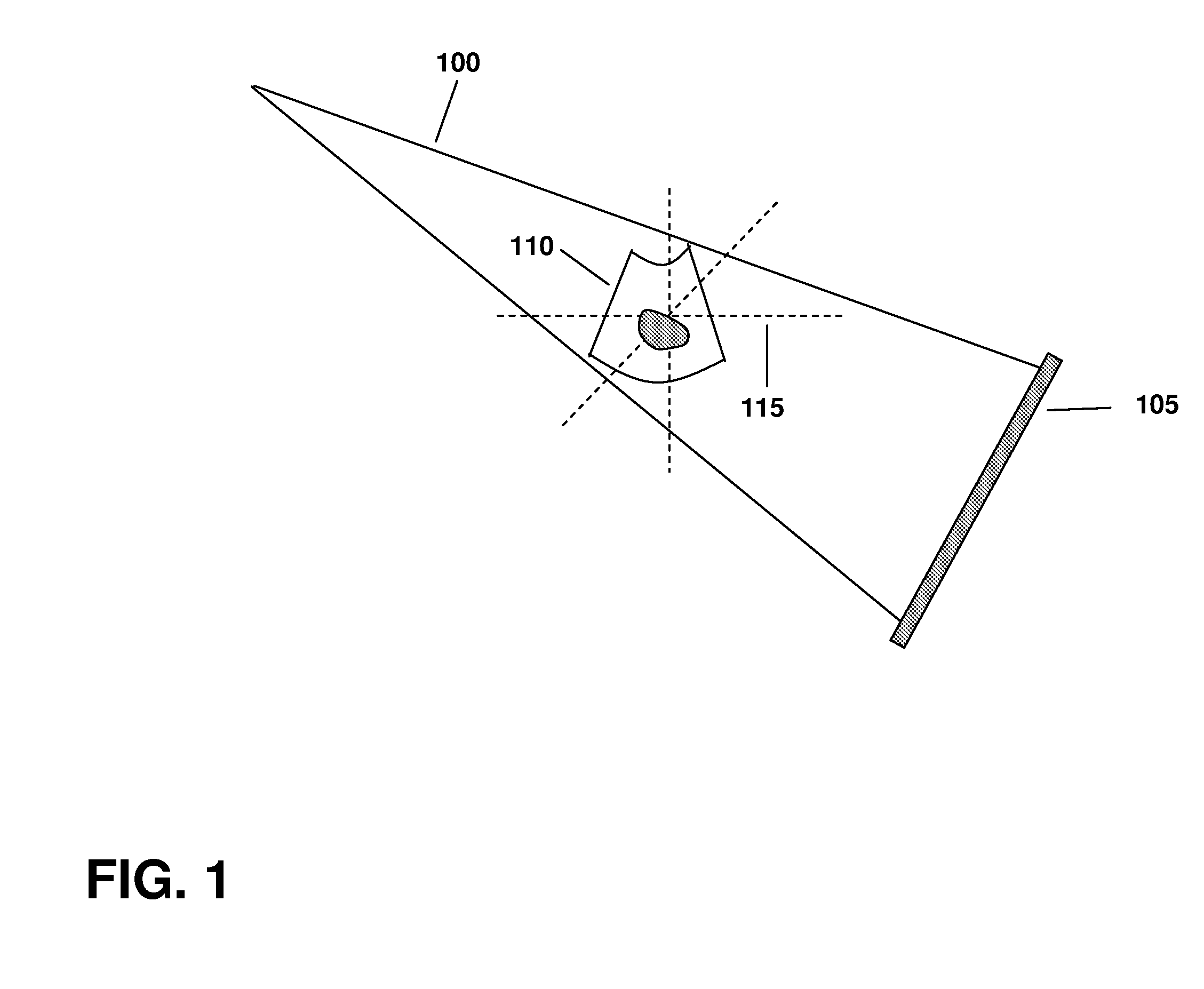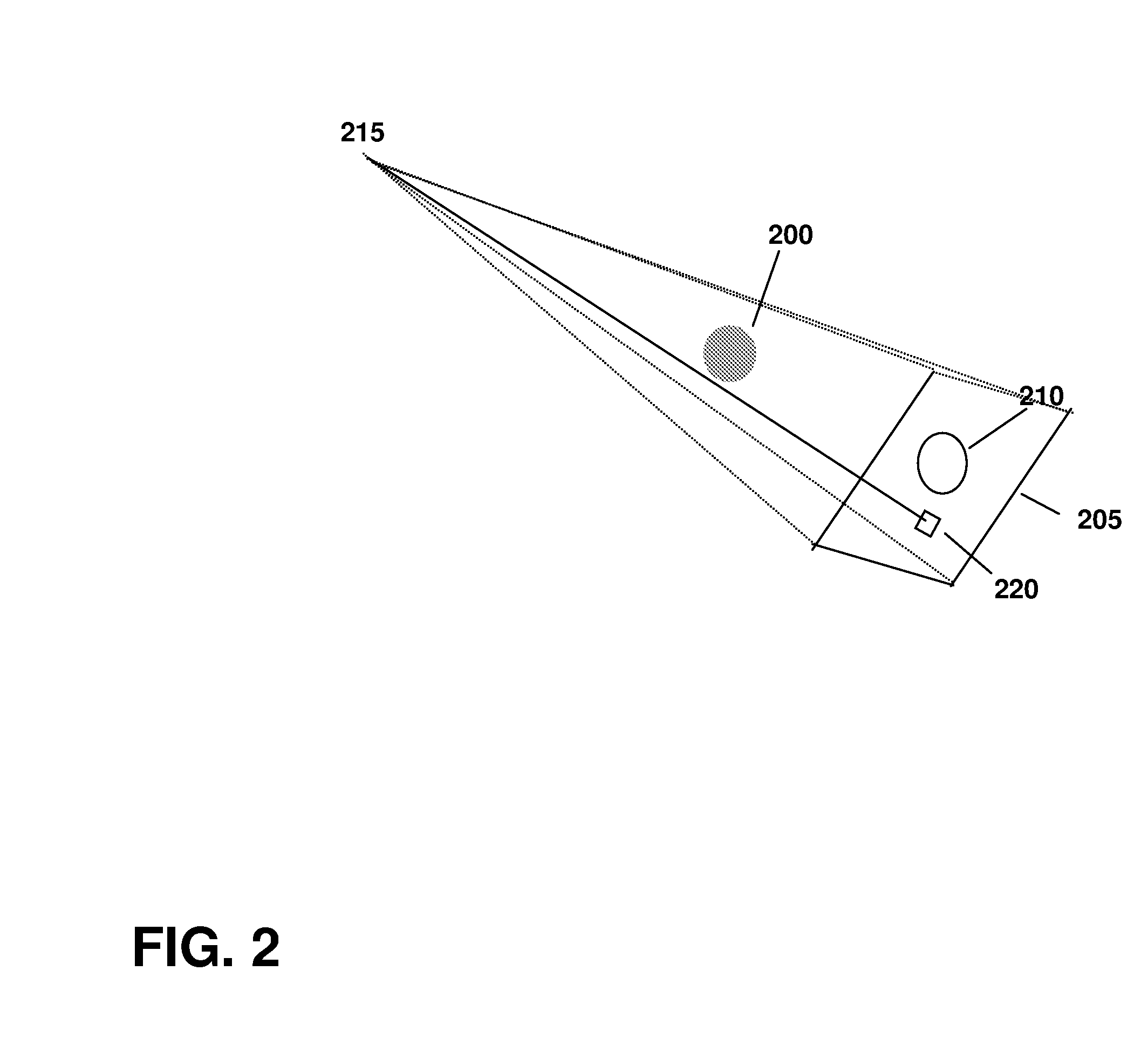Methods and systems for compensating for changes in anatomy of radiotherapy patients
- Summary
- Abstract
- Description
- Claims
- Application Information
AI Technical Summary
Benefits of technology
Problems solved by technology
Method used
Image
Examples
Embodiment Construction
[0020]In FIG. 1, which illustrates an embodiment of the invention, the beam 100 of a linear accelerator (not shown), at a known gantry angle, is used in combination with a portal imager 105 to form a 2D image of the patient. The gantry angle may then be changed, and another image acquired. Typically at least two images are acquired from different directions using the portal imager 105. The portal imager 105 is preferably an EPID, producing digital images using the treatment beam 100. The portal images may be stored in a computer. A 3D ultrasound image 110 is also acquired, before or after the portal images but within as close a time frame as possible so that the patient does not move significantly. The portal and ultrasound images may be calibrated to a common coordinate system 115 whose origin coincides with the mechanical isocenter of the linear accelerator. This coordinate system 115 may be identified using perpendicular lasers passing through the origin. Systems and methods for ...
PUM
 Login to View More
Login to View More Abstract
Description
Claims
Application Information
 Login to View More
Login to View More - R&D
- Intellectual Property
- Life Sciences
- Materials
- Tech Scout
- Unparalleled Data Quality
- Higher Quality Content
- 60% Fewer Hallucinations
Browse by: Latest US Patents, China's latest patents, Technical Efficacy Thesaurus, Application Domain, Technology Topic, Popular Technical Reports.
© 2025 PatSnap. All rights reserved.Legal|Privacy policy|Modern Slavery Act Transparency Statement|Sitemap|About US| Contact US: help@patsnap.com



